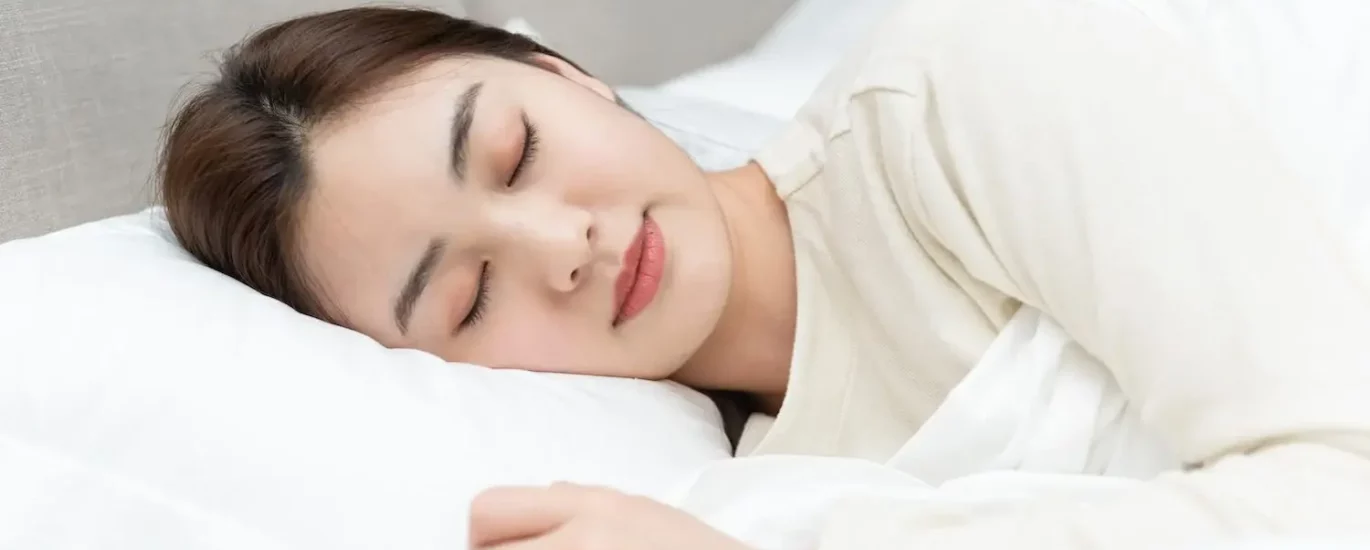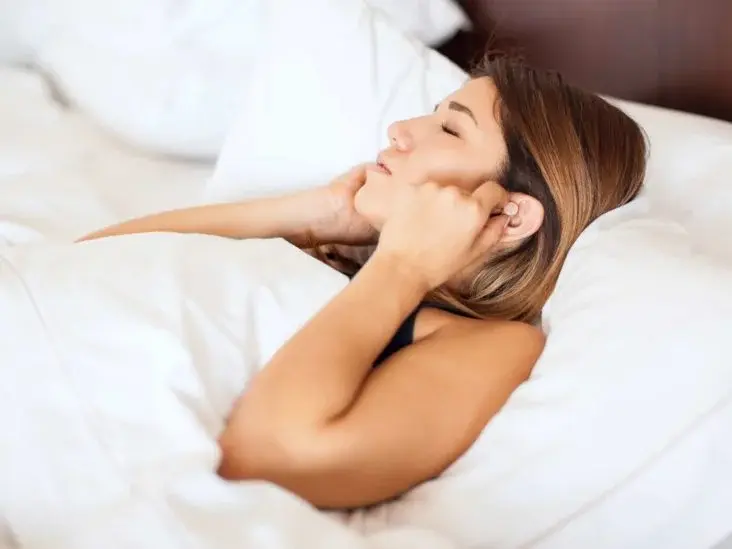


A ruptured eardrum happens when the thin tissue that separates the outer ear from the middle ear gets torn or punctured. It can cause discomfort and may lead to other problems if not taken care of properly. Proper sleeping positions are important for people with a ruptured eardrum. When we sleep, the way we position our head and body can affect how comfortable we feel and how well our eardrum heals. Sleeping in the wrong position can make the symptoms worse, increase pain, and slow down the healing process. Now many people may have a question “What Side Should I Sleep on with a Ruptured Eardrum?“.
This article aims to help you understand which side is recommended for sleeping if you have a ruptured eardrum. By knowing the impact of different sleeping positions, you can choose the best one to feel more comfortable and promote healing. Keep in mind that it’s always a good idea to talk to a healthcare professional for advice that fits your specific situation.
The eardrum is a thin, delicate tissue inside your ear that helps you hear. It sits between your outer ear canal and the middle ear. Its job is to vibrate when sound waves enter the ear, sending those vibrations to the inner ear for processing. A ruptured eardrum happens when this thin tissue gets torn or punctured. It can be caused by different things, like infections, trauma, or changes in pressure. Infections in the middle ear, also known as otitis media, are a common cause of a ruptured eardrum. These infections can lead to a build-up of fluid, which increases the pressure and can make the eardrum rupture.
Sometimes, if you get a hard blow to your ear or if something is forcefully inserted into your ear canal, it can cause the eardrum to tear. Sudden loud noises, like explosions or loud music, can also be a reason for a ruptured eardrum. Changes in pressure can affect the eardrum too. For example, during scuba diving or air travel, the pressure can change rapidly and cause damage to the eardrum, leading to a rupture. When the eardrum is ruptured, you may experience symptoms such as ear pain, trouble hearing or hearing muffled sounds, ringing in the ears, fluid or blood coming out of the ear, and feeling dizzy or unsteady.
Most of the time, a ruptured eardrum will heal on its own within a few weeks. However, if not properly managed, complications can occur. These can include infections that spread to the middle or inner ear, which can cause more problems and take longer to heal. Some people may also have long-term hearing loss or problems if they have recurring ruptures.
If you sleep in the wrong side, it can make your symptoms worse, increase pain, and slow down the healing process. If you sleep on the side where your eardrum is ruptured can cause problems. When you lie on that side, it puts more pressure on the eardrum, which can make the pain and discomfort worse. It can also make it harder for the eardrum to heal because it’s being strained. So, it’s generally not recommended to sleep on the side with the problem.
Sleeping on your back or on the opposite side of the affected ear is usually better. When you sleep on your back, your body’s weight is spread out evenly, which means less pressure on your ears. This can help reduce pain and make you more comfortable. Sleeping on the other side, away from the affected ear, can also help by reducing the pressure on the damaged eardrum. Choosing the right sleeping positions can make a big difference in how you feel and how well your eardrum heals. Sleeping on your back or the unaffected side helps make sure there’s less pressure on the ruptured eardrum, which lets it heal properly. It also lowers the chance of making your symptoms worse, like pain and dizziness, so you can get a good night’s sleep.
To make sleeping even better, you can think about your sleep environment. Using a comfortable pillow that supports your head and neck can help. It might also be helpful to use earplugs or soft ear cushions to protect the affected ear and reduce any discomfort from noise or movement while you sleep. Making your sleeping area calm and quiet can also help you sleep better.
Now we are going to answer the question that many people have in their mind “What Side Should I Sleep on with a Ruptured Eardrum?“. By following these sleeping positions and guidelines you can get rid from this problem easily.
If your ear is affected on one side, it’s best to sleep on the opposite side. Sleeping this way has several benefits. It helps reduce pressure on the eardrum, which can make you feel more comfortable. By avoiding direct contact with the affected ear, it creates a better environment for healing.
To make sure you’re comfortable while sleeping on the unaffected side, use a supportive pillow that keeps your head and neck in a good position. This helps your body stay aligned and prevents strain on your ear. Putting a small pillow or rolled-up towel between your knees can also provide extra support and make you feel more comfortable.

Sleeping on your back is a good option if you have a ruptured eardrum. This position distributes the weight of your body evenly, which reduces pressure on your ears and can help minimize discomfort. By not sleeping directly on the affected ear, it promotes healing and prevents more pain.
To keep a comfortable sleeping posture on your back, use a pillow that supports the natural curve of your neck. This keeps your head aligned with your spine and reduces strain on your neck and shoulders. Placing a small pillow or rolled-up towel under your knees can also add to your comfort and relieve pressure on your lower back.
It’s generally not recommended to sleep on the side with the ruptured eardrum. Sleeping on that side can increase pain, pressure, and interfere with the healing process. Direct contact with the affected area can make you more uncomfortable and slow down healing.
If you find it difficult to sleep on your back or the unaffected side, there are alternative positions you can try to minimize discomfort. For example, you can prop yourself up slightly with pillows to elevate your upper body. This can help reduce pressure on the affected ear. Just make sure the elevation is gentle to avoid straining your neck and back.
Keep in mind that finding the most comfortable sleeping position may take some trial and error. Everyone’s comfort levels and healing processes are different. If you have any concerns or trouble finding the right sleeping position, it’s a good idea to talk to a doctor. They can give you personalized advice and recommendations based on your specific needs.
To sleep comfortably while recovering from a ruptured eardrum, consider using earplugs or soft ear cushions to block out noise and protect the affected ear. Create a calm and quiet sleeping environment by dimming lights, reducing distractions, and using white noise machines or earplugs. Practice relaxation techniques before bed, such as deep breathing or gentle stretching, to relax your body and mind. Use a supportive pillow that aligns your head and neck properly. Follow a consistent bedtime routine that includes activities like reading or taking a warm bath to signal your body that it’s time to unwind. Maintain a comfortable room temperature and experiment with bedding materials to find what works best for you. If you have any concerns, consult with a doctor for personalized advice.
Choosing the right sleeping position is important for individuals with a ruptured eardrum to sleep comfortably and aid in the healing process. Sleeping on the side opposite to the affected ear or on your back can help reduce pressure on the ear, lessen discomfort, and promote healing. Using earplugs or soft ear cushions, creating a calm and quiet sleep environment, and practicing relaxation techniques can also improve sleep quality. Remember, everyone’s recovery is different, so it’s essential to listen to your body and seek guidance from a healthcare professional if needed. By following these tips, you can sleep better and support the recovery of your ruptured eardrum.
Read Also:
Understanding The Impact Of Sleep Wake Disorder On Health And Well-Being